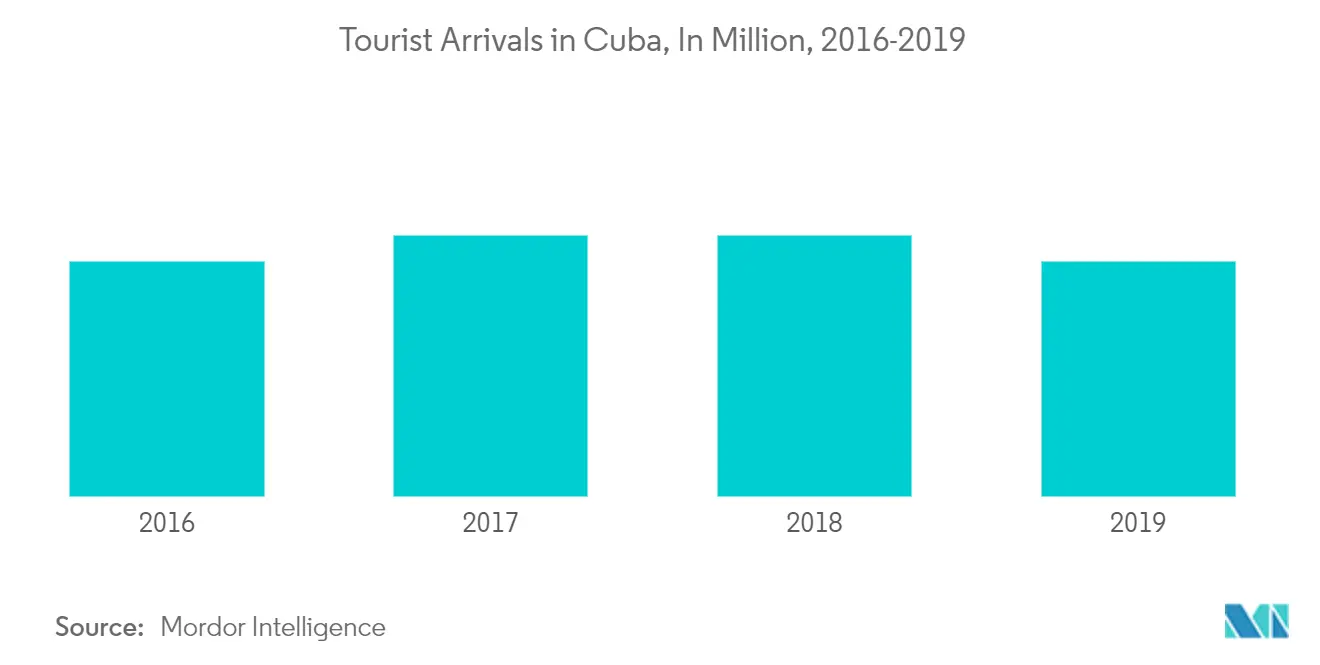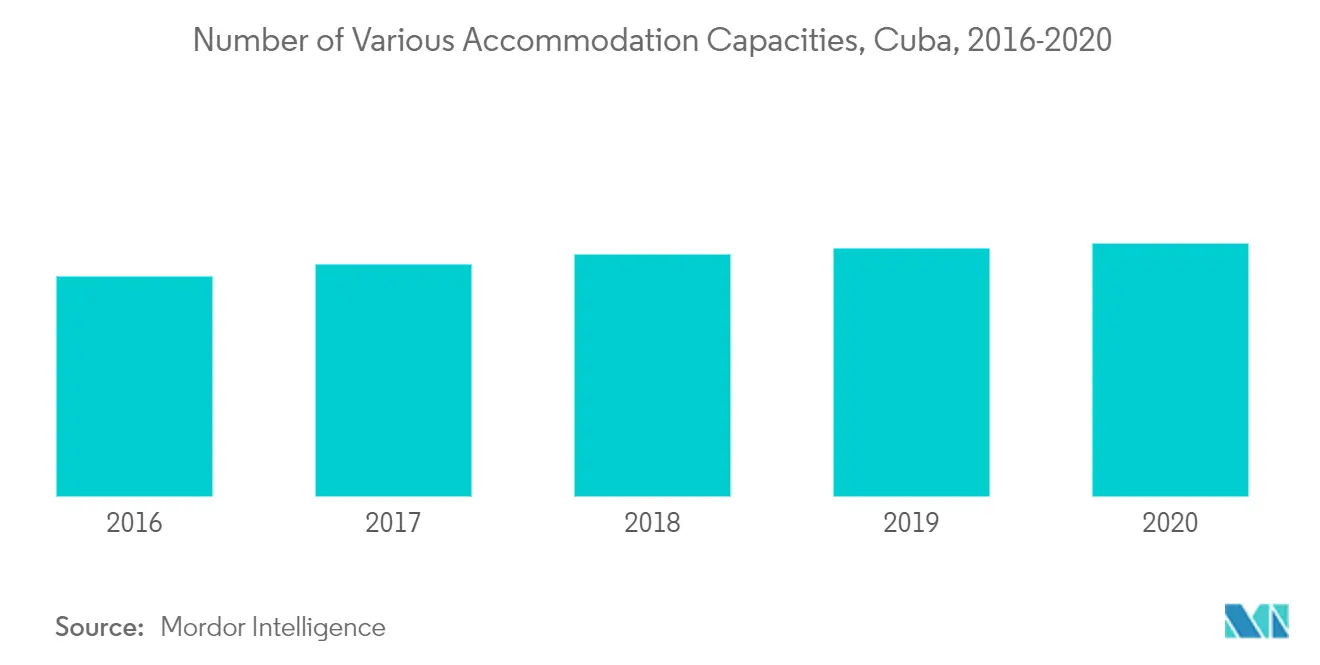Market Trends of Cuba Tourism And Hotel Industry
Increasing Tourist Arrivals to Cuba is Driving the Market
The tourism market recorded a moderate growth rate during the early review period (2017-2018), but owing to the effects of US sanctions, total arrivals to the nation dropped. This downtrend was supported by the sudden COVID-19 pandemic which hit the island nation in early 2020. During the period, the country recorded only about 1.1 million tourist footfalls, which is more than 4 million lesser as compared to previous years. However, the tourist attractions in the country are bringing confidence to the market, especially Havana, Varadero, Trinidad, and Vinales, which are the most popular tourist destinations in Cuba and are well prepared to welcome guests. Havana, the capital of Cuba, with its Spanish colonial architecture, and iconic landmarks such as the National Capitol Building from the 1920s, has been attracting several architectural lovers to the nations. Similarly, Old Havana (Habana Vieja), The Malecón, Castillo de Los Tres Reyes del Morro, and the National Museum of Fine Arts are serving as a must-see in the city and have been attracting tourists.

Growing Tourism Market is Encouraging Expansion of the Hotel Market in the Country
The hotel market in Cuba is growing with the increasing number of tourists to the country. The hotel market is on an expansion path in the nation over the past decades. Tourist arrivals have been on an upward trend during recent years (which reduced in 2020 due to the COVID-19 pandemic), and arrivals to Cuba have been optimistic and grew impressively. The nation continues to flow in line with the global growth rate while increasing its arrivals steadily. To accommodate the growing number of tourists, the hotel market has been recording a growth in total number of bed supply in Cuba. Over the years, the number of establishments in the market increased gradually offering more scope for the establishment of new hotels. Thus, the hotel market is anticipated to continue to grow over the forecast period as well with a slow yet sturdy growth rate.


